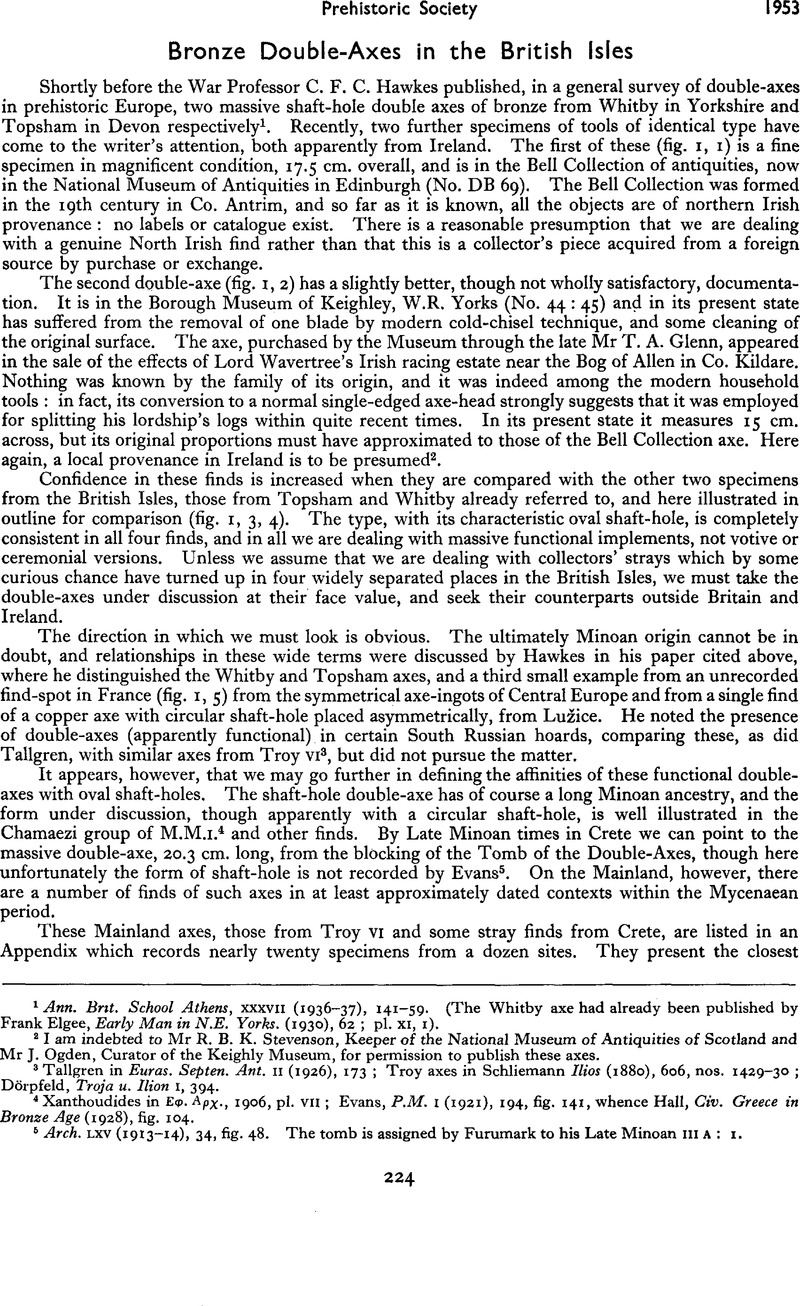Article contents
Bronze Double-Axes in the British Isles
Published online by Cambridge University Press: 27 May 2014
Abstract

- Type
- Notes
- Information
- Copyright
- Copyright © The Prehistoric Society 1953
References
page 224 note 1 Ann. Brıt. School Athens, XXXVII (1936–1937), 141–59Google Scholar. (The Whitby axe had already been published by Elgee, Frank, Early Man in N.E. Yorks. (1930), 62Google Scholar; pl. XI, 1).
page 224 note 2 I am indebted to Mr R. B. K. Stevenson, Keeper of the National Museum of Antiquities of Scotland and Mr J. Ogden, Curator of the Keighly Museum, for permission to publish these axes.
page 224 note 3 Tallgren, in Euras. Septen. Ant. II (1926), 173Google Scholar; Troy axes in Schliemann Ilios (1880), 606, nos. 1429–30; Dörpfeld, , Troja u. Ilion I, 394Google Scholar.
page 224 note 4 Xanthoudides in Εφ.Αρχ, 1906, pl. VII; Evans, , P.M. I (1921), 194, fig. 141Google Scholar, whence Hall, , Civ. Greece in Bronze Age (1928), fig. 104Google Scholar.
page 224 note 5 Arch. LXV (1913–1914), 34, fig. 48Google Scholar. The tomb is assigned by Furumark to his Late Minoan III A: 1.
page 226 note 1 Bronze double-axe, with no details of shaft-hole, from Semerdzievo, Ruse, in Sofia Mus.; Волау әа Археолоɼиуескня Музеи, I, (Sofia, 1952), pl. IX, 6Google Scholar. I am indebted to Mr W. Culican for this reference.
page 226 note 2 Hawkes, loc. cit.; cf. Taramelli, in Bull. Pal. ltal, L–LII (1930–1932), 41Google Scholar, with refs. to earlier publications.
page 226 note 3 Dating for Athens hoard by Childe, in J. R. Anthrop. Inst., LXXIV (1944), 22Google Scholar, but Miss Sylvia Benton warns me against accepting the deposit as necessarily homogeneous.
page 226 note 4 Blegen, et al. Troy III (1953), 19–20Google Scholar.
page 226 note 6 I am much indebted to Miss Sylvia Benton and Miss N. K. Sandars for their help in compiling this list.
- 1
- Cited by


